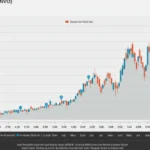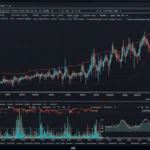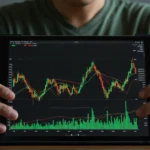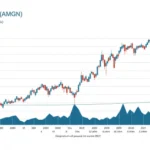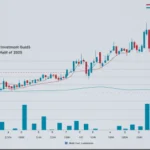From pandemic hero to a stock market laggard, the journey of Pfizer (NYSE: PFE) over the past few years has been a true rollercoaster. The unprecedented success of its COVID-19 vaccine, Comirnaty, and its therapeutic, Paxlovid, sent revenues and its stock price to historic highs. But as the world has moved into an endemic phase, the inevitable “COVID cliff” has left Pfizer facing a critical challenge: proving it can grow without the pandemic tailwind.
As we look ahead to the second half of 2025, a crucial question hangs over investors: Has Pfizer stock finally bottomed out, and is it poised for a meaningful recovery? This is no longer a simple story about vaccine sales. The answer lies in a much deeper analysis of the “new” Pfizer.
This in-depth article will dissect the core components of Pfizer’s investment thesis for the latter half of 2025. We will explore the monumental impact of the Seagen acquisition, the potential within its non-COVID product portfolio, the high-stakes race in the obesity drug market, and its enduring appeal for dividend investors.
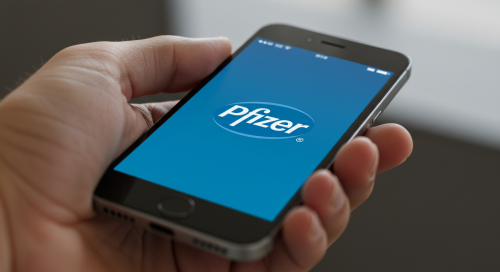
1. Who is Pfizer? More Than Just the COVID-19 Company
To understand Pfizer’s future, one must appreciate its past. Dismissing Pfizer as a one-trick pony because of the pandemic would be a critical misjudgment. Founded in 1849, the company has a 175-year legacy of scientific innovation that has fundamentally shaped modern medicine.
- A History of Blockbusters: Long before COVID-19, Pfizer’s labs and strategic acquisitions produced some of the best-selling drugs in history.
- Lipitor: The cholesterol-lowering drug that became a household name and one of the most commercially successful medications of all time.
- Viagra: A revolutionary treatment that created and defined a new market for erectile dysfunction.
- A Portfolio of Powerhouses: Products like the Prevnar family of pneumococcal vaccines, the cancer drug Ibrance, and the anticoagulant Eliquis (co-marketed with Bristol Myers Squibb) have been pillars of revenue for years.
- Strategic Transformation: In the years leading up to the pandemic, Pfizer underwent a significant transformation. It spun off its consumer health division (Haleon, in a joint venture with GSK) and merged its off-patent drug business (Upjohn) with Mylan to form Viatris. This created a leaner, more focused biopharmaceutical company dedicated to innovation and high-growth areas.
This history demonstrates a key trait: Pfizer is a resilient and adaptive organization capable of navigating market shifts and patent cycles through both internal R&D and bold, strategic M&A.
2. The Post-Pandemic Hangover: Navigating the “COVID Cliff”
The decline in Pfizer’s stock from its 2021 peak was swift and painful. The reason was simple: revenue from Comirnaty and Paxlovid, which reached nearly $57 billion in 2022, was projected to plummet. This created a massive revenue gap, and Wall Street punished the stock amid uncertainty about how it would be filled.
In response, Pfizer initiated a massive “Enterprise-Wide Cost Realignment Program,” aiming to cut billions in expenses. While necessary for protecting margins, this move also signaled a period of retrenchment.
However, the cash generated during the pandemic was not squandered. It was deployed into the single most important strategic move for the company’s future: the $43 billion acquisition of Seagen.
3. Key Catalysts for H2 2025: Building the New Pfizer
The investment case for Pfizer in the second half of 2025 is not about recapturing the pandemic glory days. It’s about the successful execution of a new strategy centered on oncology, innovative vaccines, and targeted therapies. Here are the key drivers to watch.
a. The $43 Billion Bet: Seagen and the Dawn of an Oncology Powerhouse
Completed in late 2023, the acquisition of Seagen is the cornerstone of Pfizer’s future. Seagen is a pioneer and global leader in a revolutionary cancer-fighting technology called Antibody-Drug Conjugates (ADCs).
- What are ADCs? Think of them as “biological guided missiles.” An ADC links a highly potent cancer-killing agent (the “drug”) to a monoclonal antibody that is designed to seek out and bind only to specific proteins on the surface of cancer cells. This allows for a targeted strike against the tumor while minimizing damage to healthy cells, leading to better efficacy and potentially fewer side effects.
- The Impact of Seagen:
- Immediate Revenue Contribution: Seagen brought four approved and fast-growing ADC medicines into Pfizer’s portfolio: Adcetris, Padcev, Tukysa, and Tivdak. The full-year revenue from these established blockbusters in 2025 will be critical in offsetting the decline in COVID products.
- A World-Class Pipeline: Pfizer didn’t just buy products; it bought a premier R&D engine. The integration of Seagen’s extensive ADC pipeline dramatically elevates Pfizer’s long-term growth profile in oncology, the highest-growth segment of the pharmaceutical industry.
- Strategic Dominance: This acquisition instantly positions Pfizer as a leader in the ADC space and solidifies its goal to be a dominant force in oncology for the next decade.
What to Watch in H2 2025: Investors should closely monitor the sales growth of the legacy Seagen drugs. Any upward revisions to their sales forecasts would be a strong positive signal. Furthermore, any positive clinical trial data readouts from the combined Pfizer-Seagen oncology pipeline could serve as a powerful catalyst for the stock.
b. Beyond COVID: Strength in the Core Portfolio
While oncology takes center stage, Pfizer’s other products are vital for stable growth.
- Abrysvo (RSV Vaccine): Pfizer is in a head-to-head battle with GSK’s Arexvy in the new and lucrative market for Respiratory Syncytial Virus (RSV) vaccines. Abrysvo has a key differentiator as it’s approved for both older adults and for pregnant individuals to protect their infants. Market share gains in the 2025 RSV season will be a key performance indicator.
- Nurtec ODT (Migraine Treatment): Acquired through the Biohaven purchase, Nurtec is a popular oral medication for both the acute treatment and prevention of migraines, a market with millions of patients.
- Steady Eddies: The performance of established brands like the Prevnar franchise and Eliquis remains crucial for generating the cash flow that funds R&D and the dividend.
c. The Pipeline’s Promise: The High-Stakes Obesity Race
No area of biopharma is hotter than the market for weight-loss drugs, currently dominated by Novo Nordisk (Wegovy) and Eli Lilly (Zepbound). Pfizer aims to carve out a piece of this multi-billion dollar pie with an oral GLP-1 candidate, danuglipron.
- The Oral Advantage: While competitors rely on injections, a safe and effective daily pill could be a true game-changer, appealing to patients who prefer the convenience of an oral medication.
- The Hurdles: The path is not easy. An earlier twice-daily version of danuglipron was discontinued due to high rates of side effects. Pfizer is now focused on a once-daily, modified-release version.
- H2 2025 Outlook: The fate of danuglipron is one of the biggest “what-ifs” for Pfizer. If late-stage clinical trial data released in 2025 is positive, demonstrating strong efficacy with a manageable side-effect profile, it could send the stock soaring. Conversely, another failure would be a major setback to its growth narrative. This is a high-risk, high-reward catalyst.
d. For the Value Investor: The Allure of the Dividend
In an era of uncertainty, Pfizer’s substantial dividend has become a primary reason for many to own the stock. With the stock price depressed, the dividend yield has become exceptionally attractive compared to the broader market and its pharma peers.
The key question is its sustainability. Management has repeatedly affirmed its commitment to growing the dividend. The ongoing cost-cutting program and the future cash flows from the Seagen portfolio and new product launches are designed to ensure the dividend remains secure and can continue to grow, albeit modestly. For income-focused investors, this provides a compelling reason to be patient while the growth story plays out.
4. Headwinds and Risks: A Balanced Perspective
No investment is without risk. Investors must consider the potential headwinds facing Pfizer:
- Pipeline Setbacks: Drug development is inherently risky. A failure in a key program like the oral obesity drug would significantly impact future growth estimates.
- Fierce Competition: Pfizer faces intense competition in all its key areas—oncology, vaccines, and immunology—from other well-funded pharmaceutical giants.
- Patent Cliffs (Loss of Exclusivity): Key drugs like Ibrance and Eliquis face patent expirations later this decade, which will create new revenue holes that the pipeline must fill.
- Integration Risk: Realizing the full value of the $43 billion Seagen acquisition depends on a smooth and successful integration of its people, platforms, and culture.
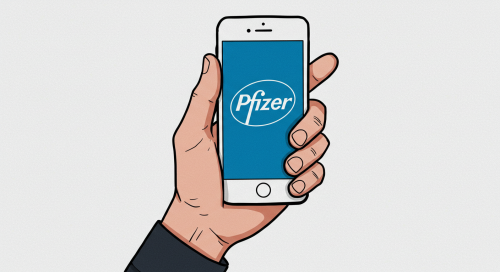
5. H2 2025 Outlook: The Verdict for Pfizer Stock
So, is Pfizer stock a buy in late 2025? It depends entirely on your investment profile.
- The Bull Case: The bulls see a deeply undervalued company on the cusp of a turnaround. In this scenario, Seagen’s products outperform, Abrysvo gains significant market share, the core business remains stable, and promising data emerges from the pipeline (especially danuglipron). The high dividend yield pays you to wait for the market to recognize the emerging oncology powerhouse.
- The Bear Case: The bears remain skeptical. They argue that the decline in COVID revenue is too large a hole to fill quickly. They fear potential pipeline failures, intense competition, and that the Seagen acquisition may not deliver on its lofty promises. For them, Pfizer could be a “value trap” for the foreseeable future.
Conclusion:
Pfizer is in a period of profound transition. It is no longer the high-growth pandemic stock of 2021. Instead, it is transforming into a more focused, science-driven company with a clear long-term strategy centered on oncology.
For investors in the second half of 2025, Pfizer represents a long-term, value-oriented turnaround play. The path forward will likely be choppy, but the strategic direction is clear. Success will hinge on execution. Investors should pay close attention to quarterly earnings reports for updates on the Seagen integration, sales figures for new products, and any and all news regarding the clinical development of its pipeline. For those with patience and a belief in the company’s new strategic focus, the current valuation may offer an attractive entry point.
Disclaimer: This article is for informational purposes only and should not be considered investment advice. The author is not a financial advisor. All investment decisions should be made with the help of a qualified professional after conducting your own due diligence.

Hi, I’m Hibiki — the writer behind HealthManual.net.
I cover health insurance news, wellness tips, and insightful analysis of pharmaceutical and healthcare stocks. My goal is to simplify complex topics and make health and finance information more accessible to everyone.
Thanks for reading — I hope you find the content helpful and reliable.

